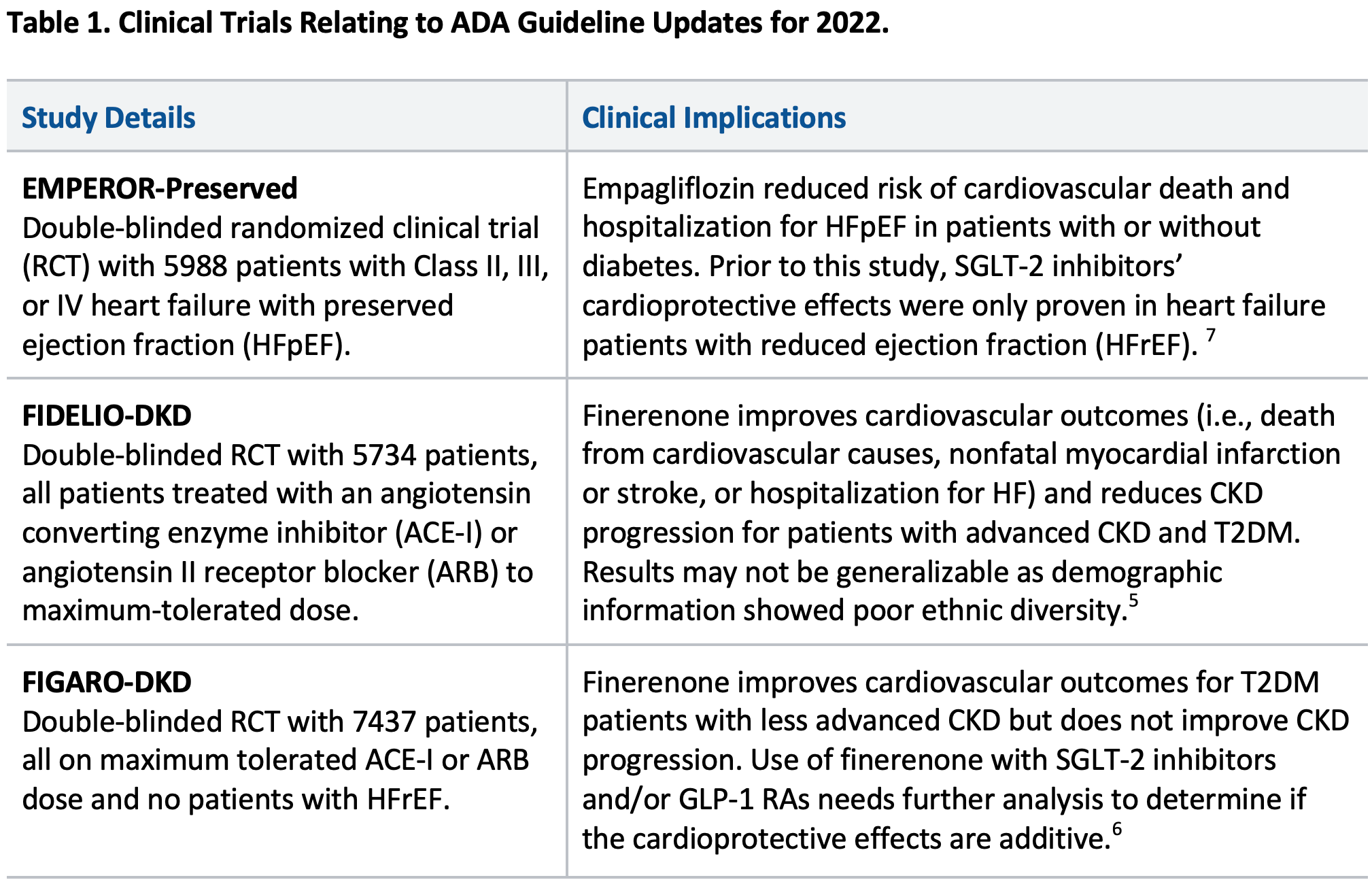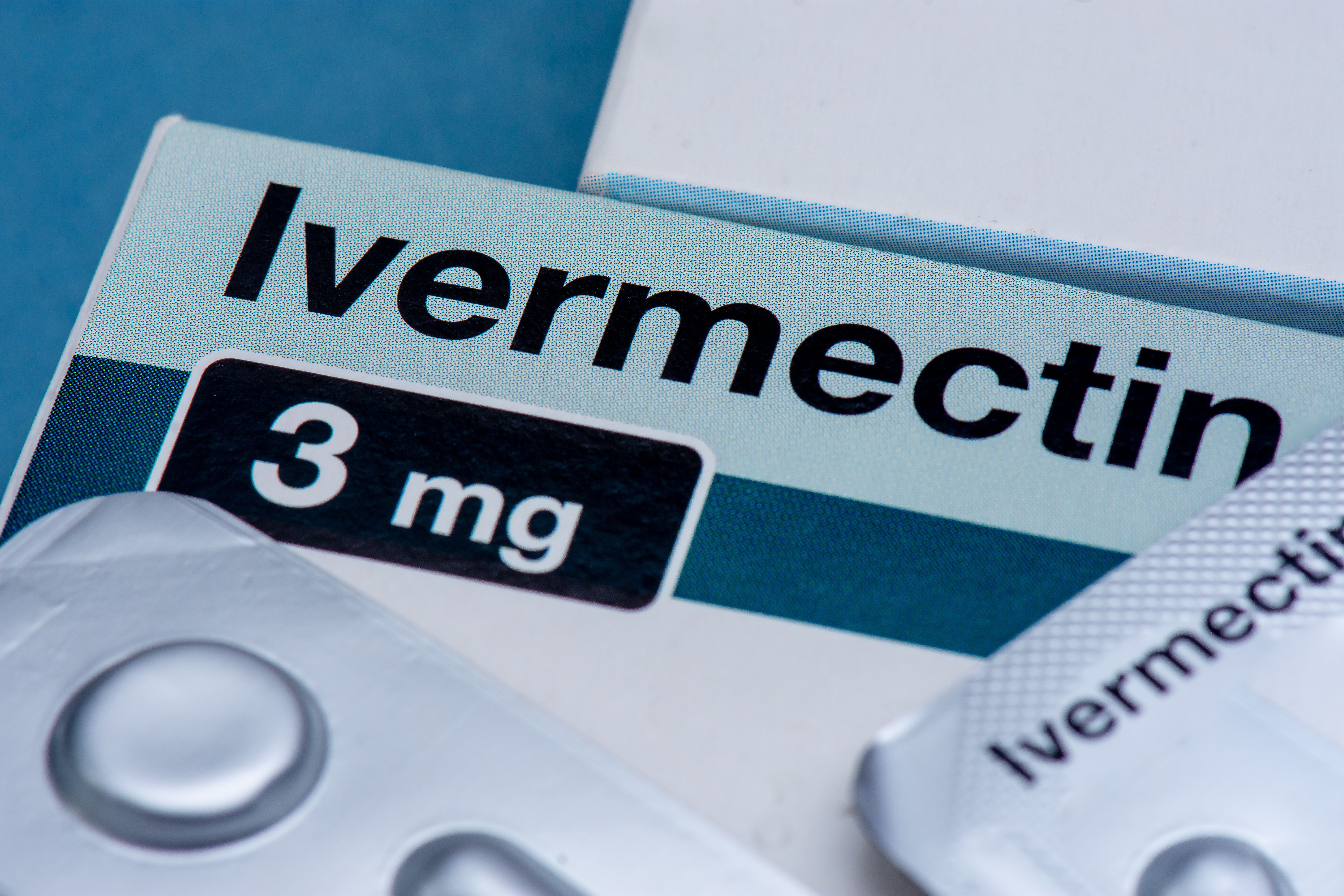Article
Notable Revisions in Diabetes Treatment According to ADA Guidelines
Author(s):
American Diabetes Association updates recommendations regarding SGLT-2 inhibitors, GLP-1 RA, and finerenone for cardiovascular and renal comorbidities.
In late May 2022, the American Diabetes Association (ADA) released revisions to its previous guidelines. Although the core structure of diabetic treatment has remained the same, recommendations regarding sodium-glucose cotransporter-2 (SGLT-2) inhibitors, glucagon-like peptide-1 receptor agonists (GLP-1 RA), and finerenone for cardiovascular and renal comorbidities have been significantly updated.1
SGLT-2 Inhibitors, GLP-1 RAs, and Finerenone: Roles in Treatment
Previously, an SGLT-2 inhibitor or a GLP-1 RA was only recommended for type 2 diabetes mellitus (T2DM) patients with current or high-risk potential for atherosclerotic cardiovascular disease (ASCVD) if additional glucose lowering was needed. Current guidelines now recommend these agents for any T2DM patient with current or high risk ASCVD, chronic kidney disease (CKD), or heart failure (HF).2 This guideline stands regardless of the need for additional glucose lowering and/or metformin use.
If patients with ASCVD remain above goal A1C despite the addition of an SGLT-2 inhibitor or GLP-1 RA, then the addition of a dipeptidyl peptidase-4 (DPP-4) inhibitor, basal insulin, or sulfonylureas as adjuncts should no longer be considered. Instead, either a GLP-1 inhibitor or SGLT-2 inhibitor—whichever agent the patient is not currently on—is recommended to add.3 Combined use of an SGLT-2 inhibitor and GLP-1 RA can produce an additive risk reduction for cardiovascular and renal adverse events.2
For renal benefit, finerenone use for patients with advanced CKD (i.e., moderately elevated albuminuria, eGFR of 25- 60 mL/min/1.73m2, and diabetic retinopathy or severely elevated albuminuria and eGFR of 25-75 mL/min/1.73m2) is encouraged.4,5
Patients with less-advanced CKD (i.e., stages 1-2 CKD with severely elevated albuminuria or stages 3-4 CKD with moderately elevated albuminuria) do not receive any benefit for CKD.6 Regardless of severity of CKD, SGLT-2 inhibitors remain first-line therapy.
Finerenone use for T2DM patients with CKD is limited as an adjunct to SGLT-2 inhibitors or for those intolerant to the first-line agent. Table 1 summarizes the clinical trials supporting these guidelines.
Finerenone (Kerendia) selectively blocks sodium reabsorption and overactivation of mineralocorticoid receptors within epithelial and non-epithelial tissues. This, in turn, reduces fibrosis and inflammation of both the kidneys and blood vasculature.
Barriers in use may include increased risk of hyperkalemia, hypotension, and high-cost ($22.76/tablet). For Mayo Health Plan members, finerenone is a tier 2R drug with prior authorization approvals limited to the FDA approved indication, CKD with T2DM.


About the Authors
Author: Jana Kay Lacanlale, PharmD Candidate, Drake University Class of 2024
Preceptor: Amanda Davis, PharmD, BCACP
References
- American Diabetes Association Professional Practice Committee. “Summary of Revisions: Standards of Medical Care in Diabetes—2022.” Diabetes Care vol.45 (Supplement_1): S4–S7. https://doi.org/10.2337/dc22-Srev
- American Diabetes Association Professional Practice Committee. “10. Cardiovascular Disease and Risk Management: Standards of Medical Care in Diabetes—2022.” Diabetes Care vol. 45 (Supplement_1): S144–S174. https://doi.org/10.2337/dc22-S010
- American Diabetes Association Professional Practice Committee. “9. Pharmacologic Approaches to Glycemic Treatment: Standards of Medical Care in Diabetes—2022.” Diabetes Care vol. 45 (Supplement_1): S125–S143. https://doi.org/10.2337/dc22-S009
- American Diabetes Association Professional Practice Committee. “11. Chronic Kidney Disease and Risk Management: Standards of Medical Care in Diabetes—2022.” Diabetes Care vol. 45 (Supplement_1): S175–S184. https://doi.org/10.2337/dc22-S011
- Bakris, George L et al. “Effect of Finerenone on Chronic Kidney Disease Outcomes in Type 2 Diabetes.” The New England Journal of Medicine vol. 383,23 (2020): 2219-2229. doi:10.1056/NEJMoa2025845
- Pitt, Bertram et al. “Cardiovascular Events with Finerenone in Kidney Disease and Type 2 Diabetes.” The New England Journal of Medicine vol. 385,24 (2021): 2252-2263. doi:10.1056/NEJMoa2110956
- Anker, Stefan D et al. “Empagliflozin in Heart Failure with a Preserved Ejection Fraction.” The New England Journal of Medicine vol. 385,16 (2021): 1451-1461. doi:10.1056/NEJMoa2107038
- American Diabetes Association Professional Practice Committee. “2. Classification and Diagnosis of Diabetes: Standards of Medical Care in Diabetes—2022.” Diabetes Care vol. 45 (Supplement_1): S17–S38.https://doi.org/10.2337/dc22-S002
- American Diabetes Association Professional Practice Committee. “15. Management of Diabetes in Pregnancy: Standards of Medical Care in Diabetes—2022.” Diabetes Care vol. 45 (Supplement_1): S232–S243. https://doi.org/10.2337/dc22-S015
Newsletter
Stay informed on drug updates, treatment guidelines, and pharmacy practice trends—subscribe to Pharmacy Times for weekly clinical insights.

FDA Grants Full Approval to mRNA-1273 COVID-19 Vaccine in Children At Increased Risk





